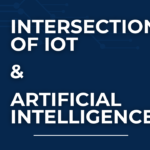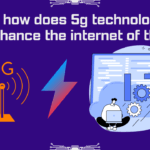The intersection of AI and IoT is transforming how we handle and analyze massive volumes of data. It is bringing new insights and opportunities for businesses. It enables real-time decision-making and driving innovation across a wide range of industries.
What are IoT and AI?
The Internet of Things refers to a network of connected devices that collect and exchange data. These devices include sensors, wearables, smart appliances, and other objects that can communicate with each other and with other systems. AI is the ability of machines to learn from data and perform tasks that typically require human intelligence. Such as recognizing patterns and making predictions.
Data Management with AI and IoT
Artificial intelligence and the Internet of Things enable firms to handle and analyze massive amounts of data in real-time. IoT devices generate huge volumes of data. It needs to be processed and evaluated quickly to deliver meaningful insights. AI systems can evaluate this data in real time, identifying trends and abnormalities and providing insights to help businesses make decisions.
Edge computing is an important aspect of data management in the context of IoT and AI. Since it processes data near the source rather than centrally. Edge computing allows for real-time data processing and analysis, which reduces latency and increases efficiency.
Analyzing Data with AI and IoT
Artificial intelligence and the Internet of Things are transforming data analysis. Machine learning algorithms can recognize patterns and trends in IoT data, allowing for predictive analytics and data-driven decision-making. One example of this transformation is the use of machine learning algorithms to predict equipment defects before they occur. This allows for preventative maintenance and reduces downtime.
Businesses can uncover inefficiencies in their operations and adopt adjustments that enhance productivity and save costs by evaluating data from IoT sensors.
Real-World Applications
- Smart Homes: Internet of Things gadgets like smart thermostats, lighting systems, and security cameras are becoming more ubiquitous in houses. AI algorithms can use data from these sensors to learn about the homeowner’s tastes and activities, and then automate things like adjusting the thermostat or shutting off lights when no one is in the room.
- Predictive Maintenance: In industrial settings, IoT sensors collect data on machinery performance. It can then be analyzed by AI systems to anticipate when maintenance is needed. This process, known as predictive maintenance, can help prevent equipment failures and reduce downtime. This allows for preventative maintenance, saving downtime and repair costs.
- Autonomous Vehicles: Self-driving cars navigate highways and make choices in real-time using a combination of IoT sensors such as lidar and cameras, as well as AI algorithms.
- Precision Agriculture: IoT devices such as drones and sensors may collect data on crop health and soil conditions, which AI systems can then analyze to optimize fertilizer and water usage, increasing agricultural production and decreasing waste.
- Healthcare: Wearable IoT devices, such as smart watches, can collect vital sign data, which AI algorithms can analyze to find patterns and predict possible health issues. This allows for prevention and early intervention.
These are just a few instances of how the convergence of AI and IoT is real-time revolutionizing numerous sectors.
Conclusion
The intersection of AI and IoT is transforming the way we manage and analyze vast amounts of data. By combining the real-time data generated by IoT devices with the power of AI algorithms, businesses can gain new insights and opportunities. From predictive maintenance to personalized marketing, the applications of AI and IoT are vast, and the potential benefits are significant. As these technologies continue to evolve and improve, we can expect to see even more innovative and impactful use cases emerge.




